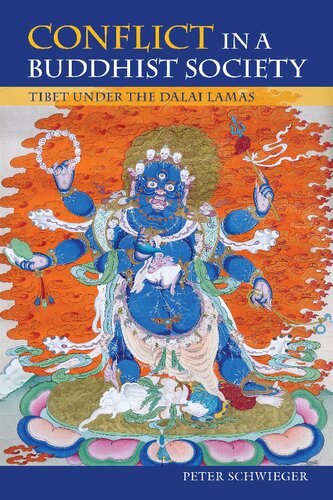

Most ebook files are in PDF format, so you can easily read them using various software such as Foxit Reader or directly on the Google Chrome browser.
Some ebook files are released by publishers in other formats such as .awz, .mobi, .epub, .fb2, etc. You may need to install specific software to read these formats on mobile/PC, such as Calibre.
Please read the tutorial at this link: https://ebookbell.com/faq
We offer FREE conversion to the popular formats you request; however, this may take some time. Therefore, right after payment, please email us, and we will try to provide the service as quickly as possible.
For some exceptional file formats or broken links (if any), please refrain from opening any disputes. Instead, email us first, and we will try to assist within a maximum of 6 hours.
EbookBell Team

4.4
52 reviewsConflict in a Buddhist Society presents a new way of looking at Tibet under the rule of the Dalai Lamas (1642–1959). Although this era can be clearly delineated as a distinct period in the history of Tibet, many questions remain concerning the specific form of rule established. Author Peter Schwieger attempts to make transparent the complexity and dynamics of the Dalai Lamas’ domination using the work of sociologist Niklas Luhman (1927–1998) as his theoretical starting point. Luhman’s systems theory allows Schwieger to approach Tibetan history and culture as a remarkable effort to create―under times of great conflict and stress and using uncommon means―a stable social and political order. Such a methodology provides the distance needed to move beyond event-based narrative history and understand the structures that made social action possible in Tibet and the operations by which its society as a whole distinguished itself from its environment.
Schwieger begins by asking the crucial question of how Tibet’s society dealt with conflict. The chapters that follow answer this question from various perspectives: history and memory; domination; hierarchy; center and periphery; semantics; morality and ethics; ritual; law; and war. Each reveals a different avenue for cross-cutting discourses in the historical and social sciences. Together, they provide a comprehensive picture of how conflicts were portrayed in Tibet society and how the manner in which they were handled stabilized the country for a considerable time but were ultimately unsuccessful in the face of radical upheavals in its environment.
Situated at the intersection of systems theory, conflict theory, and Tibetan/Inner Asian history and society, Conflict in a Buddhist Society will be of considerable interest to students and scholars in these areas. Its theoretical rather than narrative-descriptive approach to the history of the three centuries of Dalai Lama rule will be welcomed as wide-ranging and insightful.